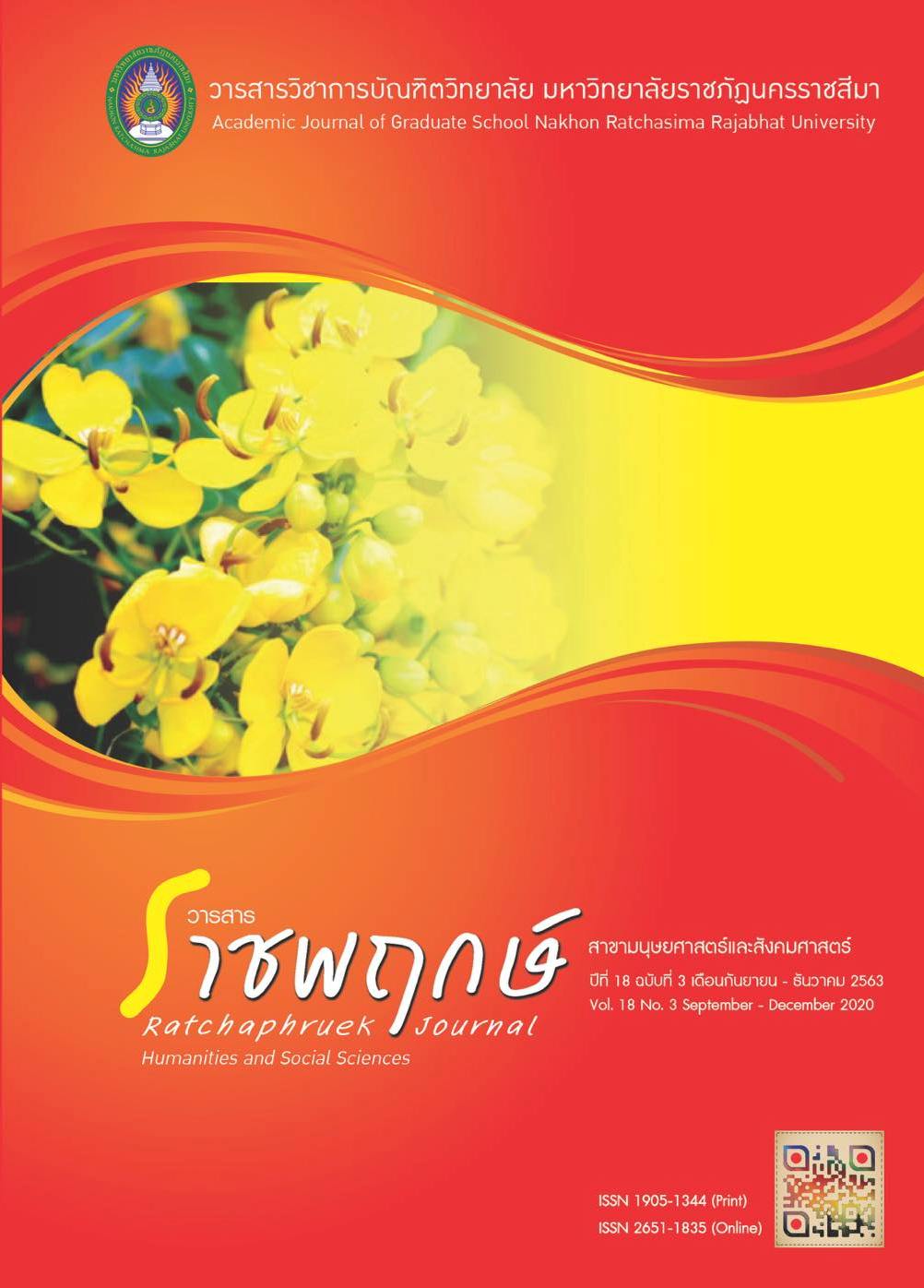Assessment Tools for Measuring Meaning in Life
Main Article Content
Abstract
This article aimed to study the assessment tools related to the meaning of life. The meaning of life illustrates how a person lives with the meaningful life, and it is unique. There are correlations between the meaning of life and several positive psychological variables, for instance, adaptability, and resilience. The research articles and academic references in this study have been retrieved from the electronic files which available in Chulalongkorn University Library’s database, while the searching keywords paper are ‘Assessment, meaning in life’ and ‘Measurement, meaning of life.’ The study illustrates 7 meaning of life assessment tools, however, only 4 have been translated and used in Thailand, namely, The Purpose in Life-Part A: PIL-Part A, The Seeking of Noetic Goals: SONG, The Meaning in Suffering Test-Part 1: MIST-Part1, and The Meaning in Life Questionnaire: MLQ. These 4 instruments adopted the perspective of logotherapy and applied research methodology in the development process. These 4 instruments have a proper psychometric property which can be used to assess the meaning of life, and for further development.
Article Details
References
อรัญญา ตุ้ยคำภีร์. (2544). รายงานการวิจัย เรื่อง ความหมายและความพึงพอใจในชีวิตของเยาวชนไทยที่ติดสารเสพติด. สาขาจิตวิทยาการปรึกษา คณะจิตวิทยา จุฬาลงกรณ์มหาวิทยาลัย.
อรฤทัย โฉมเฉิด (2552). ประสบการณ์การดูแลผู้ป่วย ความรู้สึกสอดคล้องกลมกลืนในชีวิต และความหมายในชีวิตของญาติผู้ดูแลผู้ป่วยโรคมะเร็งระยะลุกลาม. วิทยานิพนธ์ปริญญาศิลปศาสตรมหาบัณฑิต สาขาจิตวิทยาการปรึกษา คณะจิตวิทยา จุฬาลงกรณ์มหาวิทยาลัย.
Battista, J., & Almond, R. (1973). The development of meaning in life. Psychiatry, 36(4), 409-427.
Baumeister, R. F. (1991). Meanings of Life. (pp. 2-47). New York: The Guilford Press.
Crumbaugh, J. C., & Maholick, L. T. (1964). An experimental study in existentialism: The psychometric approach to Frankl’ s concept of noogenic neurosis. Journal of Clinical Psychology, 20(2), 200-207.
Crumbaugh, J. C. (1977). The Seeking of Noetic Goals Test (SONG): A complimentary scale to the Purpose in Life Test (PIL). Journal of Clinical Psychology, 33(3), 907.
Debats, D. L., Van der Lubbe, P. M., & Wezeman, F. R. A. (1993). On the psychometric properties of the life regard index (LRI): A measure of meaningful life. Personality and Individual Differences, 14,337-345.
Erci, B. (2008). Meaning in life for patients with cancer: validation of Life Attitude Profile-Revised Scale. Journal of Advanced Nursing, 62(6), 704-711.
Frankl, V. E. (1963). The doctor and the soul: An introduction to logotherapy. New York: Alfred A. Knopf.
Hablas, R., & Hutzell, R. (1980). The Life Purpose Questionnaire: An alternative to the Purpose-in-Life test for geriatric, neuropsychiatric patients. In Analecta Frankliana: The proceedings of the First World Congress of Logotherapy (pp. 211-215).
Hutzell, R. R., & Finck, W. C. (1994). Adapting the Life Purpose Questionnaire for use with adolescent populations. The International Forum for Logotherapy, 17, 42-46.
Julom, A. M., & Guzmán, R. De. (2013). The effectiveness of logotherapy program in alleviating the sense of meaninglessness of paralyzed in-patients. International Journal of Psychology & Psychological Therapy, 13(3), 357-371.
Kim, T. H., Lee, S. M., Yu, K., Lee, S., & Puig, A. (2005). Hope and the meaning of life as influences on Korean adolescents’ resilience: Implications for counselors. Asia pacific education review, 6(2), 143-152.
Pan, J. Y., Wong, D. F. K., Chan, C. L. W., & Joubert, L. (2008). Meaning of life as a protective factor of positive affect in acculturation: A resilience framework and a cross-cultural comparison. International Journal of Intercultural Relations, 32(6), 505-514.
Reker, G. T. (1992). Manual of the Life Attitude Profile-Revised (LAP-R) Peterborough.
Reker, G. T. (1997). Personal meaning, optimism, and choice: Existential predictors of depression in community and institutional elderly. The Gerontologist, 37, 709-716.
Reger, G. T., & Cousins, J. B. (1979). Factor structure, construct validity and reliability of the Seeking of Noetic Goals (SONG) and Purpose in Life (PIL) tests. Journal of Clinical Psychology, 35(1), 85-91.
Schulenberg, S. E. (2004). A psychometric investigation of logotherapy measures and the outcome questionnaire (OQ-45.2). North American Journal of Psychology, 6(3), 477-492.
Shrira, A., Shmotkin, D., Palgi, Y., Soffer, Y., Hamama, Y. R., Tal-Katz, P., Ben-Ezra, M., & Benight, C. C. (2015). How Do Meaning in Life and Positive Affect Relate to Adaptation to Stress? The Case of Firefighters Following the Mount Carmel Forest Fire. The Israel journal of psychiatry and related sciences, 52(3), 68-70.
Spillers, C. S. (2007). An existential framework for understanding the counseling needs of clients. American Journal of Speech-Language Pathology.
Starck, P. L. (1985). Guidelines-Meaning in Suffering Test. Abilene, TX: Viktor Frankl Institute of Logotherapy.
Steger, M. F., Frazier, P., Oishi, S., & Kaler, M. (2006) The Meaning in Life Questionnaire: Assessing the presence of search for meaning in life. Journal of Counseling Psychology, 53(1), 80-93.
Thompson, N. J., Coker, J., Krause, J. S. & Henry, E. (2003). Purpose in life as a mediator of adjustment after spinal cord injury. Rehabilitation Psychology. 48, 108.

